The cause of severe dental pain, forcing us to run for help to the doctor, often is tooth decay is one of the most common dental diseases in the world. This is not surprising: to keep the perfect condition of the oral cavity is difficult, or rather impossible.
In addition, many are lightly to hygiene, forgetting to brush your teeth, and eating excessive amounts of sweets.
The carious defeat of teeth can be dangerous in varying degrees, one thing is certain: eliminate it’s a must, and the sooner the treatment, the less time and money is healing.
A preventive visit to the dentist twice a year can prevent the occurrence of dental caries or to help detect it early. But many ignore this recommendation and refer to a specialist when the disease takes a serious form.
What is tooth decay?
Caries is a progressive damage to the dental tissues, leading if untreated to full their destruction. This disease affects everyone from infants to the elderly. The reason for the emergence and development of caries serve organic acids produced by putrefactive bacteria. The last breed in the remains of food and the dental plaque, which we strongly recommend to remove dentists.
Attention! Illiterate or insufficient oral hygiene is the main cause of dental diseases, and caries including. Therefore, its prevention should be aimed primarily at regular quality dental care!
The causes of the disease
About the most common cause of the disease has already been said. However, there are certain conditions that increase the susceptibility of teeth to caries.

The main factors that contribute to the development of the disease:
- genetic predisposition;
- unhealthy diet (rich in carbohydrates, sweet and too soft food, not enough calcium in the food).
- anatomical features of the dentition (overbite, incorrectly grown teeth or the gaps between them);
- violation of enamel due to mechanical damage;
- the chemical composition of saliva and its quantity (not enough enzymes to break down food);
- pregnancy and lactation;
- the presence of chronic diseases.
Interestingly, one of the reasons causing caries, may be the malfunction of the immune system, which occurs due to nervous shock. As a result of stress and slow down the process of mineralization of the teeth.
Stage of development of caries and treatment
How to treat tooth decay in dentistry? The methodology and nature of the therapeutic effects will depend on the depth of the lesion of tooth tissue from the stage at which the disease is. There are several types of classification of stages of tooth decay.
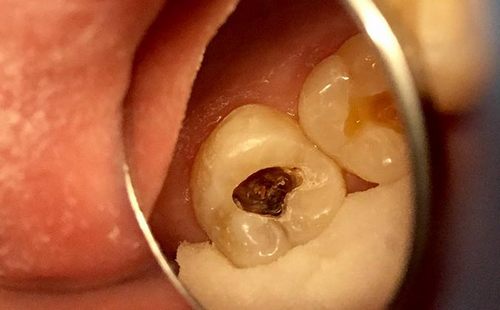
A common characteristic is volume of the affected tissues.
- First, the initial stage. The tooth appears the stain is white or yellow-brown. Discomfort is not observed. Treatment at this stage does not require drilling and opening to the enamel – remineralization is carried out.
- Surface caries. The beginning of the destruction of the enamel: the main symptom is the loss of smoothness, the surface becomes rough texture. Pain appear when taking cold, hot, sour, sweet food. In this case, the affected area of enamel is removed and fluoride is applied to the tool.
- The middle of the stage. Tooth decay destroys the enamel and affects the dentin, recurrent pain in reaction to external stimuli. Mid caries is treated with local anesthesia. The dentist releases the tooth from the affected tissues, treat the cavity with an antiseptic, sealed.
- Deep decay. The tooth tissue is destroyed to such an extent that there is a “hole” – a carious cavity. The tooth responds not only to food temperature, pain may not subside for a long time. With deep caries carious cavity completely clear from the softened dentin, and then sealed. In severe cases treatment may involve the removal of the pulp tissues and nerve.
Remember! Deeper and deeper the lesion, the longer and harder the treatment will be. When running deep caries, there is a risk of a complete loss of the tooth. At the first sign of the disease should go to the dentist.
Modern dentistry successfully uses both traditional and innovative treatment methods. Which therapeutic method would be most productive, defines a qualified doctor during examination of the patient.
Classical invasive method
If initial caries is behind us, the next need a traditional treatment using a drill.
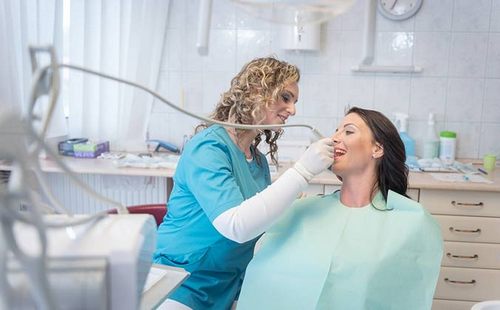
How to treat tooth decay in dentistry by the classical method?
- Removing the plaque. Abrasive toothpastes and special brushes, the doctor removes soft deposits and Tartar using ultrasonic nozzles, thereby preparing a tooth for further treatment. Need to know it. Removal of Tartar is pursuing another important goal: it will help the doctor to determine the natural color of the enamel, which is necessary in the selection of the restorative material.
- Anesthesia. This is the next required procedure performed in the treatment of medium and deep caries, if the tooth is drilled with the living. The doctor chooses the drug depending on individual patient records. Anesthesia makes the procedure painless and facilitates the work of the doctor: the patient will sit quietly.
- Removal of damaged tissue. Is accomplished by reaming and purification cavity from the softened dentin. Enamel is more durable than dentin, and breaks down slower. Therefore, usually a cavity in a depth wider than the outside – it needs to be expanded and remove all the affected areas.
- Isolation from saliva. Previously, this was done with the help of cotton cushions, modern dentists use latex plate rubber dam.
- Antiseptic treatment of cavity before installing the seals.
- Preparation for the filling (treatment of enamel with an acid and the application of the adhesive) and very filling.
- Grinding seal and polishing.
Important! All these procedures are performed in one visit if the tooth is not complicated with pulpitis. If suddenly during the treatment of the tooth will be discovered pulpitis is likely to have to undergo treatment in several stages.
Innovative techniques in modern dentistry
Nowadays, the use of a drill is no longer considered the only and sole treatment option caries. The General tendency of any treatment is reducing the invasiveness. Although to do entirely without the use of a drill in the treatment of caries is really impossible, there are new non-invasive and minimally invasive ways to cope with the disease at different stages of development. Their main task is to stop the development of incipient caries, or to warn him. How to treat tooth decay in dentistry today, without preparation, what is the effectiveness and progressiveness of alternative methods?
Remineralization
One of the effective methods to cope with the disease at the stage of spots and normalize to the teeth after removal of orthodontic design. In fact remineralizing treatment aimed at restoring tooth enamel by applying to the surface of the tooth special tools – gels, solutions, pastes, containing calcium, phosphorus, fluorine, and other inorganic substances. The procedure is performed only in the dental office in two ways – simply by the application of drugs and the method of deep fluoridation. The method of deep fluorination involves the use of enamel-sealing means, so that the effect of fluorides prolonged, as a result of such application of fluoride stored in the tissues longer.
Important. The sooner is remineralization, the better the predictions. The disappearance of the spots will occur, if treatment is started while the disease is not affected by keratin fibers of the tooth. The procedure is performed after a preliminary professional cleaning.
Infiltration method with ICON technologies
Promising a gentle method of combating tooth decay in the early stages without mechanical action on the tooth. The essence is to apply on the enamel of the special infiltration – primerisima resin ICON, which is under the influence of UV-lamp fills micro cracks of the enamel, as if sealing them and stopping the progression of the disease. The process is painless and quick – it takes up to 20 minutes. After treatment, the enamel acquires strength, resistance to aggressive environments, restoring the color and structure. At the moment ICON technology is used only for the treatment on the affected enamel: if affected dentin, the technique is not used.
Ozone therapy
The method is based on the principle of suppression of the activity of bacteria that cause caries. Once inside carious lesions, ozone instantly kills the organisms causing the destruction of dental tissues. The advantage of this method is the impact only on the affected areas.
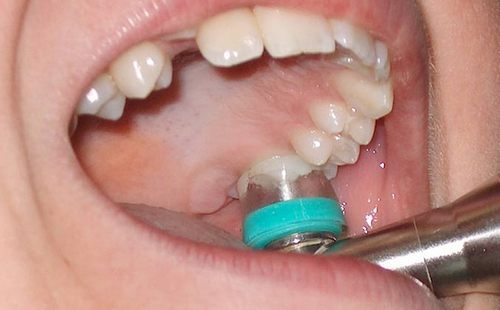
Therapy is a special device that produces ozone, which is applied to the enamel NIB sealed silicone mouthguard. Penetrating the biofilm, ozone kills bacteria and disinfects the tooth tissue. After the treatment is carried out remineralization or sealing of fissures special composite materials. The procedure is short (20-30 C) and painless, so is used in pediatric dentistry.
Air-abrasive method
With this method, the removal of carious tissues occurs under the influence of a fine stream of abrasive particles. This method in some cases allows to do without the use of a drill. A powerful stream removes the softened tooth tissue, without affecting healthy. In the application of techniques do not creates noise, vibration, in the early stages of the disease is not require anesthesia. Removal of carious tissues is a pulse, for 5-10 seconds each, which is more efficient than when working with a drill. The use of air-abrasive method eliminates the development of secondary caries. However, this method cannot always be applied because of the inability to bring the tip to reach the affected areas.
Laser therapy
The main advantages of the method of laser treatment is a painless procedure, with the exception of the formation of cracks in the enamel and prevention of relapse. The absence of tissue heating, the minimum level of noise – all this allows to recommend an approach for the treatment of caries in children and pregnant women. Dissection occurs laser selectively removes only the diseased areas, do not damage healthy teeth. The time spent on preparation compared to the drill is reduced by 40%.

Interestingly, in modern dentistry, the laser is used not only for caries but also for its diagnosis. Moreover, unlike x-rays, laser diagnostics eliminates the radiation.
ART-technique
This noninvasive method is developed by Dutch scientists and is the use of a mechanical tool, which soskrebajut affected areas, and special glass-ionomer cement for filling tooth cavities. This technique is used for the treatment of superficial and medium dental caries and is suitable for those who are afraid of the work of the drill.
The techniques used to treat teeth in children
How to treat caries in children dentistry? When selecting techniques consider features of the child’s body and psychological factor. The main priority here is a painless procedure. In the treatment uses the same techniques as for adults, remineralization, ozone therapy, infiltration.
In early stages effective method of silver – coated enamel metal solution, which disinfects and protects the teeth from developing the disease. The disadvantage of this method – the teeth turn dark gray, white enamel can not be restored – therefore, the method is used only in primary teeth. With medium and deep caries without the use of a dental drill cannot do.
The main reason why people are afraid to ask for help to the dentist – fear of pain. Fear comes from the Soviet era, when anesthesia was rare, treatment was associated with physical efforts to the dentist for a tooth extraction, the shaking of a vibrating handpiece and wild pain when removing the tooth nerve. The fear was passed down by inheritance – children going to the dental clinic actually turned into something terrible and impossible.
How to cure teeth without pain?
Modern dentistry destroyed once established stereotypes and claims: treatment of pathological conditions of the teeth today – a process that can be not just painless but even imperceptible!
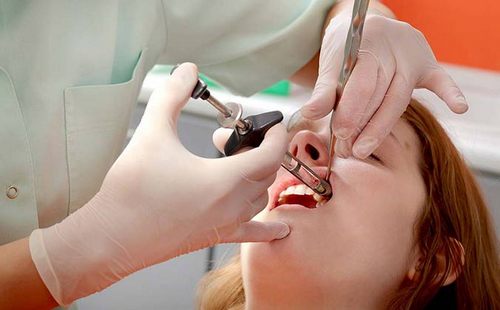
Important! To the rehabilitation of the teeth was the most comfortable, non-durable, painless to the patient, it is enough twice a year to come for a checkup to the dentist.
Today, there are various methods of anesthesia to make the treatment process is absolutely painless and comfortable for patients. For each dental procedure has its own, most effective form of pain relief.
Applicative anesthesia
Surface type of anesthesia, without the use of injections, where the drug does not penetrate the tissue deeply. For anesthesia using special dental gels or spray with lidocaine. The technique is applied to extract a loose tooth, opening of abscesses, removal of hard dental deposits, analgesia location for injection.
Infiltration anesthesia
This is an injection into the soft tissue, a method used since the Soviet era, in which anaesthetic drug is injected under the periosteum or into the bone under the mucous membrane. It is a deep and high-quality analgesia, in which the sensitivity is completely gone in a few minutes and lasts hours. This method is used for the treatment and canal filling of the dentition of the upper jaw.
Vnutrimatocny anesthesia
The method involves injection of anesthetic into the tissues of the periodontium. Feature intraligamentary (vnutrimatocny) anesthesia sensitivity is lost already in the first minute after injection and recovered after 20 minutes, a painless prick, no sense of numbness of the tissues.

The last point is particularly important: eliminating soft tissue damage associated with the violation of the sensitivity. Especially recommended for children and people whose work requires verbal load. Indications – treatment of teeth with deep caries, pulpitis, removal, preparation for orthopedic construction.
Conduction anesthesia
Large-scale anesthesia for removal of sensitivity of the lower jaw, there is a blockade of a branch of the trigeminal nerve: numb half of the lips and of the tongue. Method is used to treat gums, teeth, or if you need to treat a large area of the lower jaw.
Intraosseous injection
This type of anesthesia involves injection of anesthetic medication directly into the bone, which is held between the roots of teeth. Lose sensitivity only the aching tooth and gums. This method is used as an alternative to infiltration, conduction or vnutricletocnam according to the testimony of the dentist.
Stem anesthesia
Methods stem anesthesia is used in complicated cases of dentistry in injuries of the jaw and cheeks, associated with severe pain, operations, and neuralgia. Feature of the method is the capacity and duration of analgesic effect. The drug is injected at the base of the skull, locking from the top, and mandibular nerves.
Attention! Before starting treatment be sure to inform the dentist about available cardiovascular diseases and allergic reactions to drugs.
Is it possible to cure tooth decay at home?
Treatment of caries in the home aimed at ensuring compliance with measures for the prevention of its occurrence, strengthening the enamel at the initial stage of the disease, preventing the spread of disease and elimination of pain – at the late.

If the tooth still hurts, in contact with cold and hot food, there are serious manifestations of caries – black dots, but only had white spots, home therapy may include:
- remineralisation the strengthening of tooth surfaces gels and pastes with a content of trace elements;
- rinse decoction of sage, chamomile, oak bark, which have antibacterial properties.
Folk remedies can be used to relieve toothache (but not eliminate its cause!). If a toothache, and the doctor in the next few hours does not work, you can rinse your mouth with infusion of chicory root, or applied to the affected tooth a piece of propolis. And then immediately to the dentist.
Remember: to cure tooth decay at home is impossible, this can only be done by a qualified technician in the dental office. Similarly, as to give recommendations on how to act at home. Trying to cope on their own, googling “miracle money”, you only aggravate the disease, which will be reflected then on the duration and cost of treatment!
Prevention
Despite the fact that vaccination against dental caries is not invented and to ensure that the disease does not hit the teeth, no one can

You can minimize the chances of occurrence of disease by following simple prevention of caries.
- Regular thorough care of the oral cavity: cleaning sweeping movements for 3-5 minutes at least 2 times a day, flossing after meals. Toothbrush be changed at least once in two months.
- The use of fluoro-, mineralokeramiki toothpastes, gels.
- Control of supply. To restrict the carbohydrates – flour, sweet, fat – nuts. Seeds, to increase the intake of solid fruits and vegetables.
- Try to rinse your mouth with water or a special tool after eating, especially sweet and sour.
- Use chewing gum with xylitol content.
But the most effective measure is a preventive examination twice a year at the dentist that can diagnose the disease and will help to stop the process in the beginning.


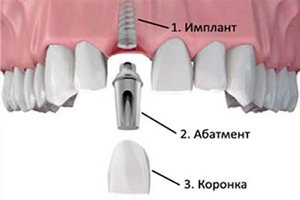
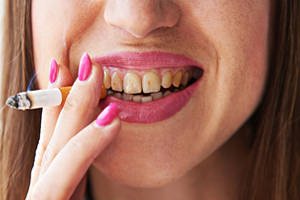
good stuff. I will make sure to bookmark your blog.
Black on black in the Charg I’m creepin’ Rub me the right way, you might get a genie B.o.B, black Houdini
I have discovered some considerations through your site post. One other point I would like to mention is that there are many games on the market designed particularly for toddler age children. They consist of pattern acknowledgement, colors, wildlife, and shapes. These typically focus on familiarization as opposed to memorization. This will keep little children engaged without having the experience like they are learning. Thanks
The vote came the day after Wal-Mart threatened to pull back plans to open stores in D.C. if the city council passed the act. In an op-ed published in the Washington Post on Tuesday, Wal-Mart’s general manager for the U.S., Alex Barron, who is responsible for all planned stores in the D.C. region, said that the D.C. city council would give the retailer no choice but to backtrack on its plans if city leaders passed the law. Wal-Mart had plans to open six stores in the metro area, and three are currently under construction.
Greetings! This is my first visit to your blog! We are a collection of volunteers andstarting a new project in a community in the same niche.Your blog provided us useful information to work on. Youhave done a outstanding job!
This makes me think of the other info I saw earlier
Soooo cool! I woke up and later in the day I started thinking about this stuff. I found your site on Google and it toally answered my questions. Thanks mucho much!